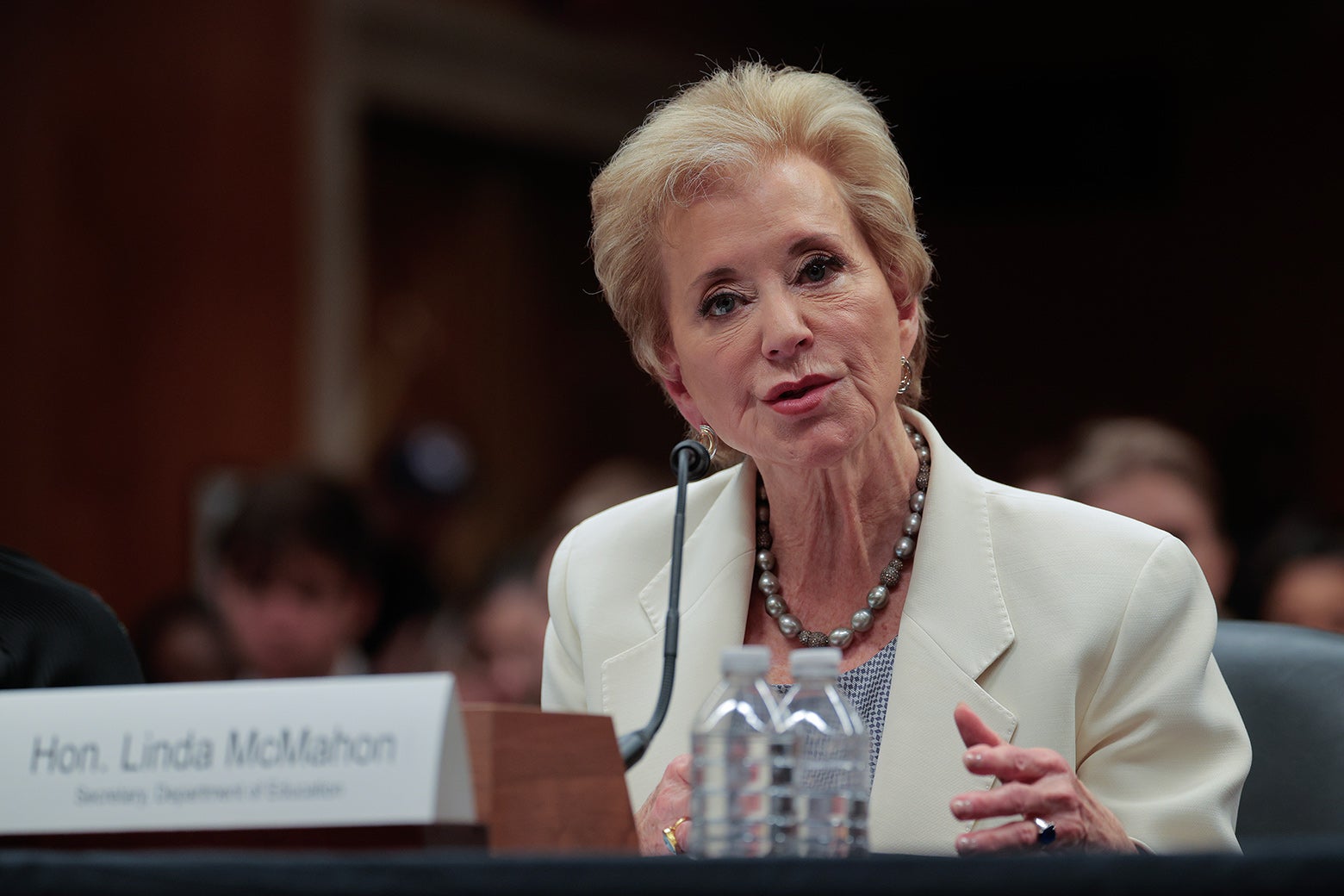School
By
Mary Harris
Enter your email to receive alerts for this author.
Sign in or create an account to better manage your email preferences.
Unsubscribe from email alerts
Are you sure you want to unsubscribe from email alerts for Mary Harris?
Nov 13, 202510:31 AM


Chip Somodevilla/Getty Images
Sign up for the Slatest to get the most insightful analysis, criticism, and advice out there, delivered to your inbox daily.
When reduction-in-force notices went out to hundreds of Department of Education employees as part of the shutdown, more than 100 of these DOE workers were part of the team that oversaw special ed around the country. They ensured resources got distributed equitably, and had been doing that since the ’70s. Now, they are simply not there.
A court has put these firings on hold, but that hasn’t made parents feel much better. Pepper Stetler knows this well. Stetler is a professor who writes about education and disability, and her 13-year-old daughter, Louisa, has Down syndrome.
It’s not like special ed in this country has been perfect. But for 50 years, it has been there. The federal government has acted as a watchdog, stepping in if states fail to deliver the right of education to disabled children. But even with the government set to reopen, many of the cuts to special education may remain.
On a recent episode of What Next, host Mary Harris spoke to Stetler about the state of special education in the country and what is lost when the federal government guts oversight. This transcript has been edited and condensed for clarity.
Mary Harris: What is the history of special education? When did it become something the government was funding, and what was life for kids like before that?
Pepper Stetler: Special education became something that the government was funding officially in 1975 with the passing of the Education for All Handicapped Children Act, which eventually became the Individuals With Disabilities Education Act. Before that, it was pretty grim. Only one in five children with disabilities were educated in public schools.
What happened to everyone else?
Either they were in institutions or they stayed home. There were some private schools, but schools could legally refuse to enroll children with disabilities. And many states actually had laws explicitly excluding children that schools deemed uneducable. This was usually students like my daughter, somebody who had an intellectual disability, and it was perfectly legal not to educate students with disabilities.
How did the 1975 act change the lay of the land for kids with disabilities and their families?
It mandated that all children with any form of disability must be provided a free, appropriate public education in the least restrictive environment. States and school districts could no longer turn away a student because they have a disability.

